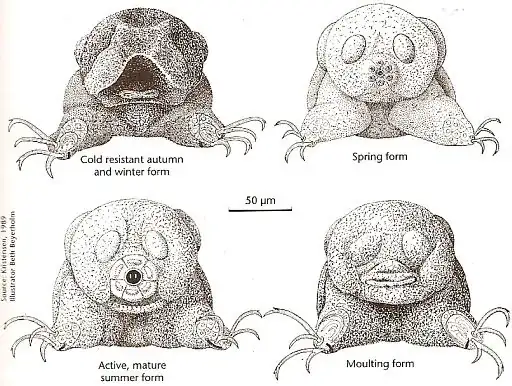Adaptive shapeshifters that rapidly assimilate other life forms and steal their useful traits, basically. Could these exist or is it scientifically impossible?
-
4Such things are so drastically outside anything we know that it's hard to make guesses from our life as far as mechanics, however such rapid transformations would require significant amounts of energy (or obscenely efficient use of traditional biological energy) so that might be the Achilles' heel to this idea. – Ranger Jul 10 '16 at 04:06
-
@NexTerren They could take the energy from the creature they are taking attributes from. – Bellerophon Jul 10 '16 at 08:55
-
@Bellerephon Which is a fairly normal way of gaining energy (eating meat and breaking it down) but that's orders of magnitude short of efficient enough to pull off such instantaneous assimilation/transformation. – Ranger Jul 10 '16 at 11:43
-
I think you'd need to first explain how you feel any kind of shapeshifter is scientifically plausible. Then, we could discuss how the specific traits of some specific example of shapeshifter may or may not fit within that model. – user Jul 10 '16 at 18:48
-
Maybe a little speculative, but I have some thoughts on this matter. I think that the closest thing we would have to the Thing that has been seen before is cancerous tissue/tumors. This would explain the Thing's grotesque physical form. Those can grow out of control, and there are apparently cases of tumors growing to over 100 pounds. Pretty unusual, but that's real. Teratoma tumors can also grow tissues and organs, even brain tissue. So perhaps something like the Thing could be a teratoma tumor that digests the body and replicates it, maybe using stem cells. Yuck! – Tom Jul 27 '17 at 02:11
-
Granted, that doesn't address whether the extremely elaborate and crazy body transformations in the 1982 movie were at all plausible. Or if they made any sense from a survival perspective (rather than a scare the audience perspective). This is probably why the Thing hasn't been talked about for plausibility; because the stuff it does is very hard to evaluate, in comparison to a xenomorph. But it's food for thought. Still is probably only a little possible. I would hope; I wouldn't want it to exist! – Tom Jul 27 '17 at 02:28
2 Answers
Here you can see some real-life shapeshifting,apart from the Tardigrade in the picture. Jellyfish are shapeshifters too but in another way, they basically kill themselves during the transformation to become child again and then grow back in another adult, it's shapeshifting somehow but it implies self-sacrifice, more like a fenix.
But probably they aren't as fast as you would want, and I surely don't know what could stress an animal so much to make it change it's shape almost instantly.
This is basically impossible. There are (at least) two parts to the problem, each of which is something that no earthly creature can do, and which is way beyond our ability to create artificially.
First, your creature has to be able to incorporate the genetics of creatures it consumes into itself. That can happen with single-celled animals, but anything more complex has an immune system, one of whose main purposes is to prevent that happening. Because that's what viruses do: take over cells with their own genetics.
If you assume that problem is solved, the creature still has the problem of rebuilding its body according to the new genetics. Cells don't divide and re-organise themselves at that speed; the things that get closest are very aggressive cancers, which are growing out of control. You might claim that an alien species could grow this fast, but you're using the newly-incorporated genetics, which can't. The problems of energy supply, overheating, and so on are also fatal for this scheme.
I can envisage a way to do this, by having a creature entirely built of nanomachines, which is capable of analysing the genetics of things it kills and reconfiguring itself to imitate them, but this is using so much nano that it's basically magical, and it's not clear why there's any point in doing the genetic analysis when the creature is made of smart-matter and can turn into anything it wants anyway.
- 24,461
- 4
- 55
- 98
-
2Aphids, beatles, sea slugs, ferns, tardigrades, and other multicellular organisms have all experienced horizontal gene transfer. https://en.m.wikipedia.org/wiki/Horizontal_gene_transfer. So it's clearly not impossible in somewhat complex organisms. – Myrdden Wyllt Jul 10 '16 at 15:13
-
1Is there a credible way a shapeshifter could gain/lose body mass when changing forms? does offer some suggestions on how your second problem could potentially be addressed. That question, though, only shot for credible or believable, as opposed to scientifically plausible. – user Jul 10 '16 at 18:51
